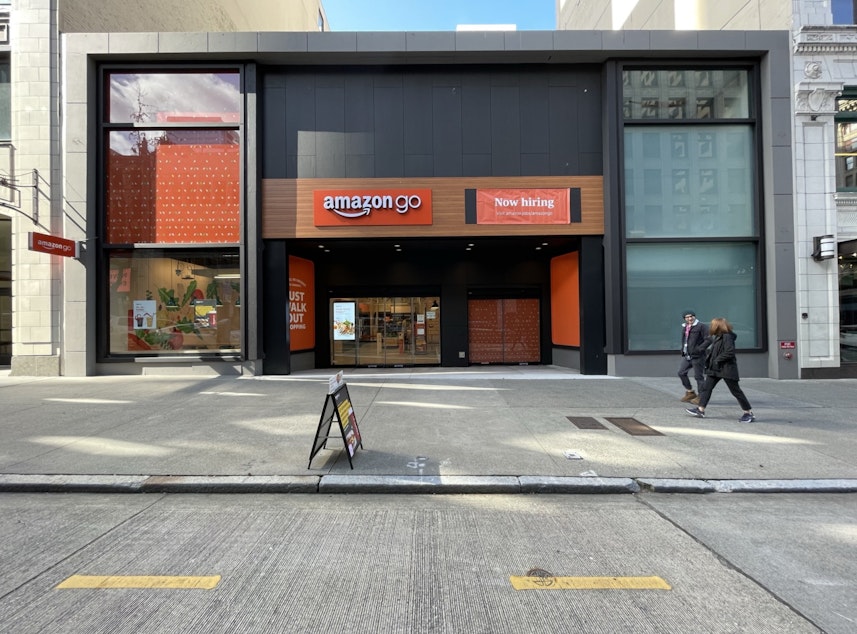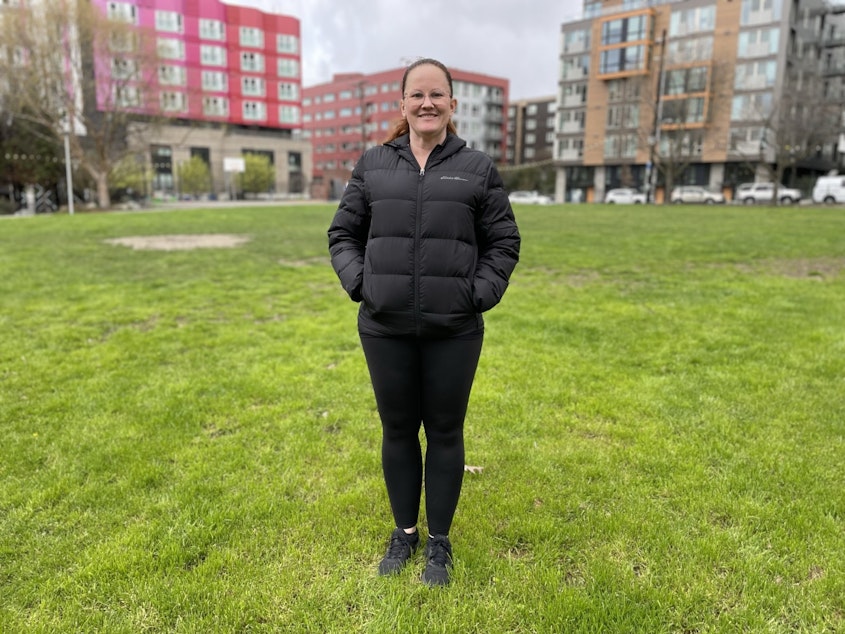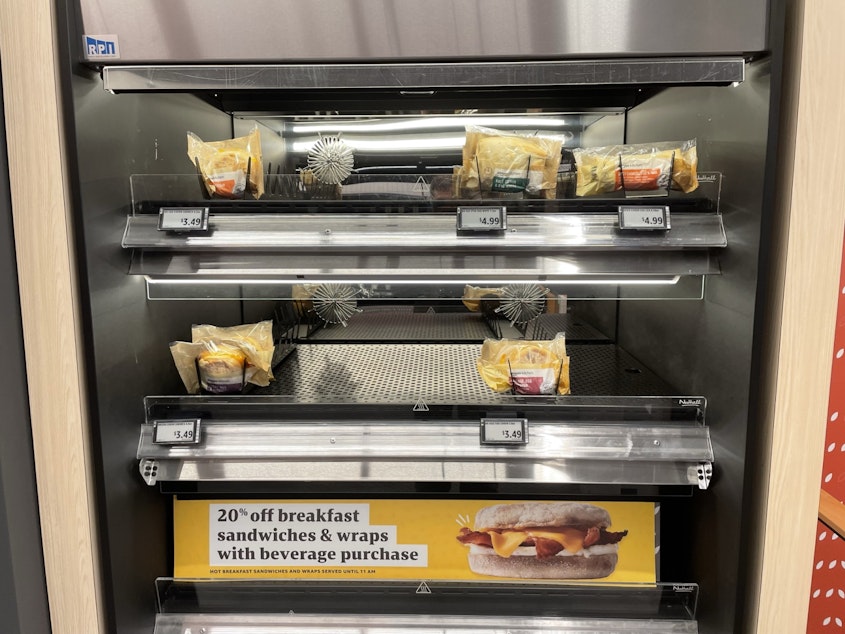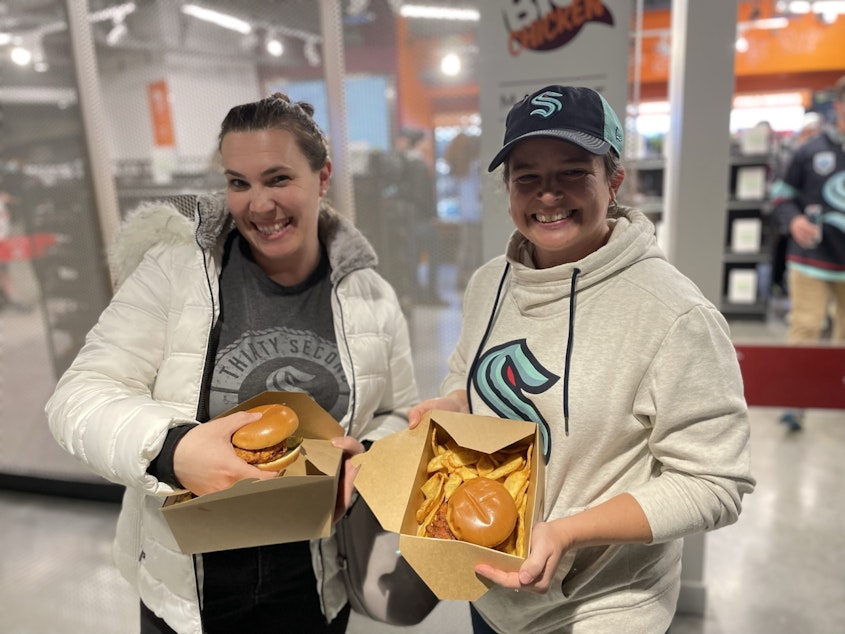Why Amazon Go hasn't transformed retail...yet

When Amazon Go opened its first stores, there was all kinds of hype and excitement.
A few headlines used the phrase "the future of retail." The idea that you could just walk out of a store without stopping by a cashier to pay seemed like a game changer.
But it hasn’t changed the world in the way some people expected, at least not yet. We went to find out why.
At Amazon Go, you scan in with the Amazon App. In some places, you can use your palm or a credit card to enter. Cameras watch you, registering what you pick up. When you leave, you're automatically charged for what you took.
Visitors to the new Mill Creek store seem willing to give it a chance.
“We had to kind of read the instructions to get in, because we haven’t done it before,” said Veronica Morrin, who stopped in with her mother for lunch. "So far, we like it."
Matt Dickert has been coming here regularly with some friends from Jackson High School.
"We’ll go in, and we’ll pick stuff out, and then somehow it... knows,” he said. “It's really cool because it's so different."
Sponsored
Customer Brooklyn Buchanan said she appreciates the efficiency of not checking out.
“I don’t need to go through a line, wait behind a bunch of other people who have a lot of stuff when I only have like two things,” Buchanan said.
But if this is the future of retail, it’s not coming very quickly.
“If you look at what they’ve rolled out, they haven’t rolled out 50 to 100… there’s a handful,” said Anjee Solanki, the top U.S. retail expert for Colliers, an international commercial real estate company.
We'll get to her analysis later, but as for her point: Amazon has just a couple dozen or so Amazon Go stores, and the "Just Walk Out" technology hasn't exactly spread like wildfire to other kinds of stores and restaurants.
Sponsored
There are three kind of surprising reasons why.

Staffing challenges
The first one is staffing.
Even though there are no cashiers, it does take employees to make the store run smoothly. But some Amazon Go employees say the company can't keep its downtown Seattle stores staffed.
Sponsored
“As quickly as they find someone, someone quits, or someone leaves,” said Mimi Martin, who works in one of those downtown stores. Martin said she likes her job, but she wishes she wasn’t stretched so thin.
“It’s just go go go go go, no stop,” she said.

Martin said she hasn’t had a lunch break since she started working there.
“It’s a common thing that I’ve heard from all the employees," she said. "And I’m like – wow, another business that is just not treating their employees like they should be.”
Sponsored
Other Amazon Go employees shared similar stories. They said taking a lunch break is impossible when they're running the store all by themselves and alarms keep beeping at them to stay on task: fill the coffee, remove food from the ovens or it will burn, roll out the cash register because a tourist wants to pay cash, and replenish the shelves, because there's a new wave of construction workers coming soon and they're hungry.

Amazon disputes the allegations. A spokesperson said Amazon continues to successfully hire for store positions. Another spokesperson said, "In the event an employee is not able to take a meal break, or their meal break is interrupted, they are paid in compliance with Washington state law."
Tom Geiger, a spokesperson for UFCW 3000, which represents many grocery workers in Washington state, said that's not what the law says. He said a 30-minute break away from work is required, except by mutual agreement between worker and manager. During that time, Geiger said, "You could leave the store, you could go to a break room... If your friend had a helicopter you could probably fly out of the county and back. You're pretty much free to do what you want to do."
However Amazon decides to handle this, ushering in the future of retail could prove difficult if employees aren't on board.
Sponsored
Customers who don't get it
On top of its staffing problem, Amazon has a second challenge.
The company’s been trying to sell this technology to other kinds of stores and restaurants, and some of their customers just don’t get it.
For example, Amazon installed its "Just Walk Out" technology in a few of the restaurant spaces at Climate Pledge Arena.
In some ways, this is the ideal location to watch this grab-and-go technology at work. Hockey fans tend to run for food all at same time, because they don’t like to miss any of the game.
But at one of the last Kraken home games of the season, fans weren't always tuned in to the new technology.

“It’s a little confusing because there’s a line up of people who don’t quite understand what’s happening,” said a customer named Amir, who stood in the line, shaking his head.
Just past the turnstiles, inside Big Chicken, there’s a bottleneck. The line is being held up by one guy who’s waiting for a type of sandwich that happens to be out of stock at the moment. The other sandwiches are just sitting there, abundant and quickly losing their internal heat.
The intent is that other customers would cut in front of the guy waiting for his particular sandwich and just grab what’s available. But nobody wants to cut. So the line grows longer.

Josh Halpern, the CEO of Big Chicken, said maybe the fans don’t understand what "Just Walk Out" means.
“Or are they so used to queuing that they’re getting in line, following the herd?” He wondered.
Halpern said he is excited about the technology, because eventually, he thinks people will figure it out. But he said he’s not planning to use it in his other restaurant locations.
That leads to the third reason Amazon’s technology may not be the future of retail after all.
Limited usefulness
The technology only makes sense in super-busy places: places where you can sell, say, hundreds of identical hamburgers in-between hockey periods.
“At the stadium, because it’s so turn and burn, the burgers are how they come. And you can’t customize them at all,” explains Marcus Lalario, the CEO of another restaurant at this stadium that’s trying out the technology, Lil Woody’s.
Lalario loves the technology too, but like the other CEO, he does not think it makes sense for his other locations.
“In our brick and mortars, we’re a lot more flexible with special orders, because we understand that’s a big part of our business is creating your own burgers and being able to ask for no pickles, no catsup, you know what I mean," he said.
Almost all the companies trying out Amazon’s technology are in airports, big casinos, or sports stadiums. "Just Walk Out" hasn’t trickled down to America’s Main Streets.
Amazon is pushing back against this idea that this concept can only work in limited circumstances. The most recent Amazon Go store wasn’t in a busy downtown. It was in a residential suburb (Mill Creek).
Retail has other problems to solve first
Anjee Solanki, who we heard at the beginning of the story, is the top expert in U.S. retail at Colliers.
She says even if Amazon overcomes all the obstacles it’s facing, it’s still not clear if its technology will become a hot seller.
That’s because the pandemic has introduced a different set of problems for retail stores.
“They have supply chain, they have the buy-online-pick-up-in-store, curbside, buy-online-return-in-store," Solanki said. "They’re dealing with so many different layers within their various channels.”
For companies facing these problems, Amazon's technology may not be what they need right now.
“And so, it may not be at the moment on their priority list, because they have all these other things that they have to solve for,” she explained.

But Solanki said she is optimistic that Amazon can overcome its obstacles and prove the technology’s relevance. She said if any company can do it, Amazon can.
“One thing they really believe in – is testing concepts, refining concepts as they go,” she said.
And the company's slow roll out of this technology may show it's approaching its problems conscientiously, she said.
But what about customers? Do they think this is the future of retail?
Dennis Lee was a customer at Climate Pledge Arena. He’d just gone through that long line for food. But his description of the experience was nothing but positive.
"It was really efficient, just like the Amazon Go stores,” he said.
Can he see this technology spreading to other kinds of businesses?
"Gosh, I hope so," he said.
Lee does not work for Amazon, he said when asked. He's a customer, nothing more.
And at Amazon, a company that says it's obsessively focused on customers, that's the judgement they care about most.




